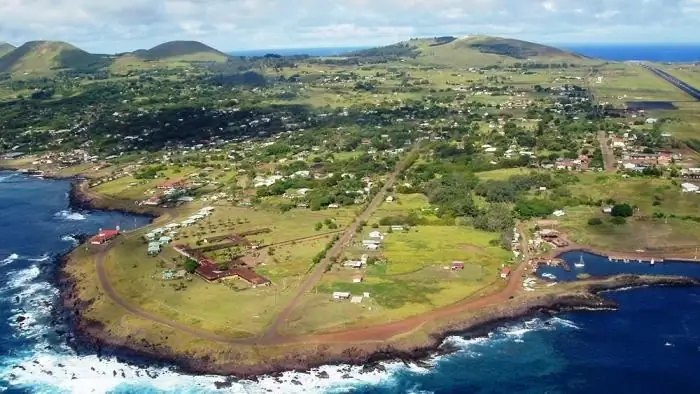- Author Harold Hamphrey [email protected].
- Public 2023-12-17 10:06.
- Last modified 2025-01-24 11:10.
The Sava River, being a right tributary of the Danube, flows through the lands of four countries of South-Eastern Europe: Serbia, Croatia, Bosnia and Herzegovina, and Slovenia. Originating in the mountains on the territory of the last state, the river merges with the Danube in the city of Belgrade.
The central part of the river serves as the natural border of Bosnia and Herzegovina with Croatia. The large number of states crossed by the Sava makes it one of the most important rivers in the Balkans.

Geography and Hydrology
The Sava River is the longest tributary of the Danube and the second largest drainage basin after the Tisza. The length of the river is 990 kilometers, while the first forty-five of them, the Sava flows through the Alpine valleys of Slovenia. The Sava is one of the largest rivers in Europe and perhaps the only waterway of this volume that does not flow directly into the sea.
The population of the river basin exceeds eight million, and the number of capitals on the Sava river reaches three, these are Belgrade, Ljubljana and Zagreb. For a considerable distance, the river is navigable for large ships, which means that for a long time it was one of the main transport arteries of Southeast Europe, comparable in importance to such rivers as the Rhine or the Elbe.
The river bed is a natural border between Central Europe and the Balkan Peninsula.

From source to mouth
The Sava River is formed by the confluence of the Sava-Bohinko and Sava-Dolinka. In the immediate vicinity of the source, several large rivers flow into the Sava - the Sora, whose length reaches 52 km, the Trzic Bystrica (it stretches for 27 km), as well as the seventeen-kilometer Radovna.
However, the Sava feeds not only on the waters of other rivers, but also on melt waters flowing down from the surrounding mountains, as well as underground waters that come to the surface in the form of numerous springs and springs.
From where the river formed to its tributary called the Sutla, the Sava flows eastward at an altitude of 833 meters above sea level. Ljubljana is not only the capital of the state, but also a city in Slovenia on the Sava River. And before entering the city limits, the river meets two hydroelectric dams on its way, and also passes several lakes and reservoirs.
However, immediately after Ljubljana, the channel turns to the east, where the height of the river drops noticeably. Looping along the hills, the flow of the Sava meets numerous villages and towns on its way, the inhabitants of which traditionally use the proximity of the river and its resources in their life.

Sava River in Serbia
For almost six hundred kilometers from the confluence with the Danube, the described river is navigable and, in accordance with the international classification, corresponds to the quality of navigation class V.
Despite the fact that the depth of herThe fairway allows quite heavy vessels to pass, its tortuosity imposes significant restrictions on their length. Therefore, in 2008, the countries through which the Sava flows made a preliminary decision to deepen and straighten the riverbed in some places, which, according to experts, should increase the flow of goods and improve the safety of navigation.
The Serbian capital Belgrade is the largest city on the river's path. The population of this city exceeds 1,200 thousand people.

River basin ecology
The level of environmental pollution varies considerably throughout the river basin and depends on the level of industrial development in a particular country. In addition, agriculture, which is the main source of nitrogen pollution, is a major contributor to water pollution.
On the territory of Serbia, the vast majority of enterprises and cities do not have treatment facilities, which significantly worsens the ecological situation and reduces the biological diversity in the river. Sources of significant industrial pollution have been identified on the territory of Bosnia and Herzegovina, Serbia and Slovenia.
In 216 samples, mercury concentrations exceeding the maximum allowable values by 6 times were found, and significant doses of heavy metals were found in bottom sediments. In particular, copper, zinc, cadmium and lead are contained in these samples at concentrations well above the maximum allowable levels.
Croatia produces the least pollution. Researchers attribute this fact to the most careful attitude of the government of the republic to the environment, and the significant development of the tourism industry.






